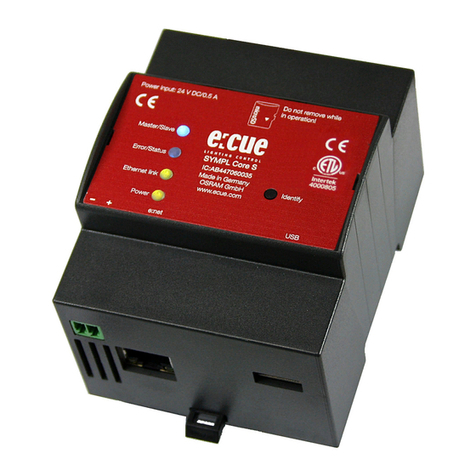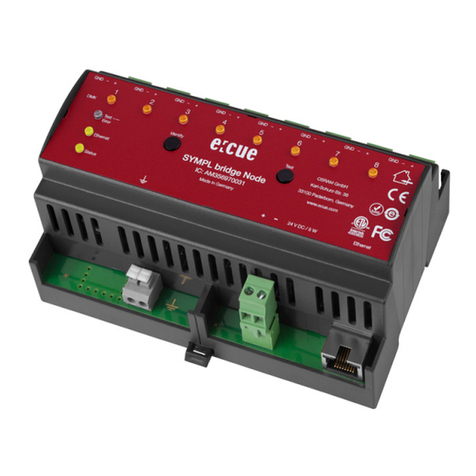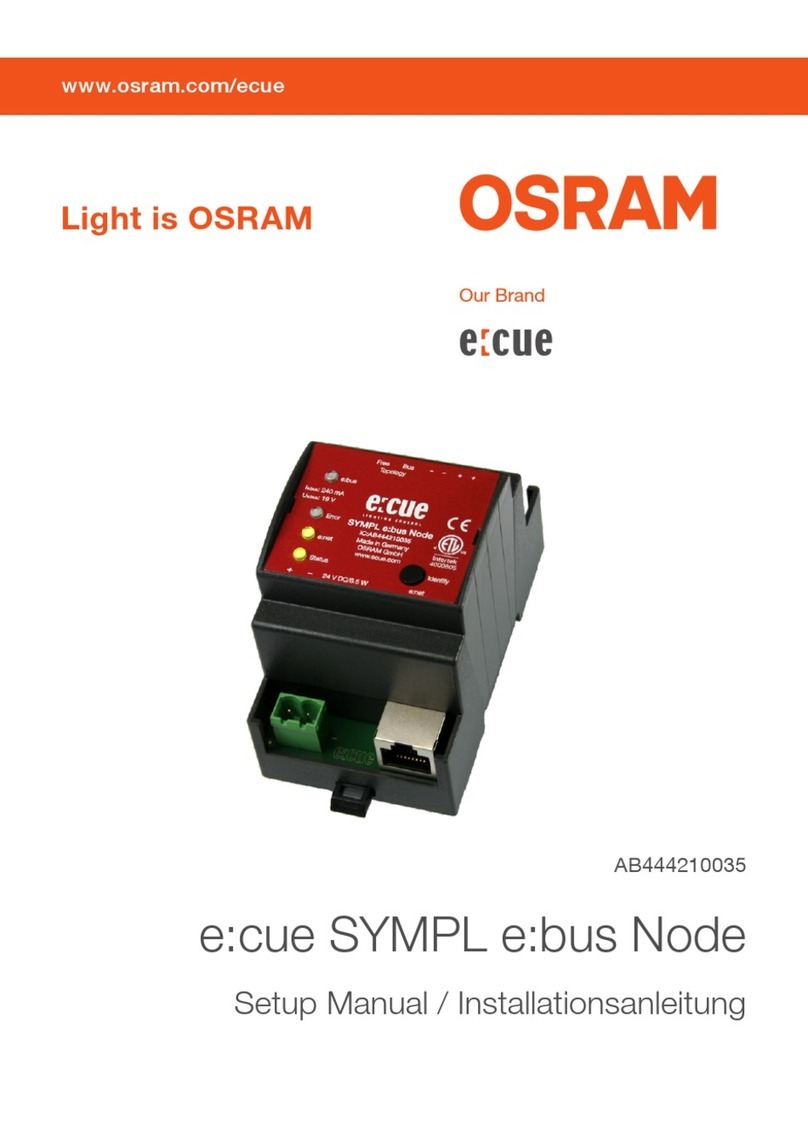
10
General device description
e:net Off: no link available.
On: link established.
Blinking: e:net trafc.
Test / Error Off: no error detected.
Short-short-long sequence: Test mode active.
On: If constantly lights in red, an error occurred. This
can be an internal error or malfunction of the device, or
an external error, e.g. a shortcut of interface
connections or alien power supply. Switch the device off
and on. If the error persists, check the wiring or contact
OSRAM Service.
Status +
Test / Error
The Status and Test / Error LED blink simultaneously to
identify the SYMPL Node (enabled “Identify Interface
Mode” in SYMPHOLIGHT).
DMX/RDM 1
and 2
Orange: DMX/RDM data outgoing.
White: e:pix data outgoing.
Blue: data incoming.
Orange + White: port error.
2.4 Identify button: Identification & Reset & Testing
The Identify button has four functions: to send an Identify message (A), to
reset the Node (B), to test the installation (C), and to exit the error state (D).
(A) A short press during operation in online mode sends an Identify
message to the server. This helps to assign the Node in the Layout in
SYMPHOLIGHT.
(B) The Identify button can also be used to reset the device to factory state
or to stay in bootloader mode:
• Keep the Identify button pressed while powering up, Status and
Test / Error light up at rst. Bootloader mode is signaled by a fast
blinking Status LED. Release the button now. The device stays in
bootloader mode to download a new rmware.



































